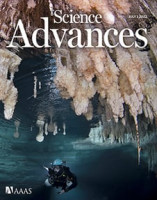
“The Permian-Triassic mass extinction severely depleted biodiversity, primarily observed in the body fossil of well-skeletonized animals. Understanding how whole ecosystems were affected and rebuilt following the crisis requires evidence from both skeletonized and soft-bodied animals; the best comprehensive information on soft-bodied animals comes from ichnofossils. We analyzed abundant trace fossils from 26 sections across the Permian-Triassic boundary in China and report key metrics of ichnodiversity, ichnodisparity, ecospace utilization, and ecosystem engineering. We find that infaunal ecologic structure was well established in the early Smithian. Decoupling of diversity between deposit feeders and suspension feeders in carbonate ramp-platform settings implies that an effect of trophic group amensalism could have delayed the recovery of nonmotile, suspension-feeding epifauna in the Early Triassic. This differential reaction of infaunal ecosystems to variable environmental controls thus played a substantial but heretofore little appreciated evolutionary and ecologic role in the overall recovery in the hot Early Triassic ocean.” To be read in Science Advances
